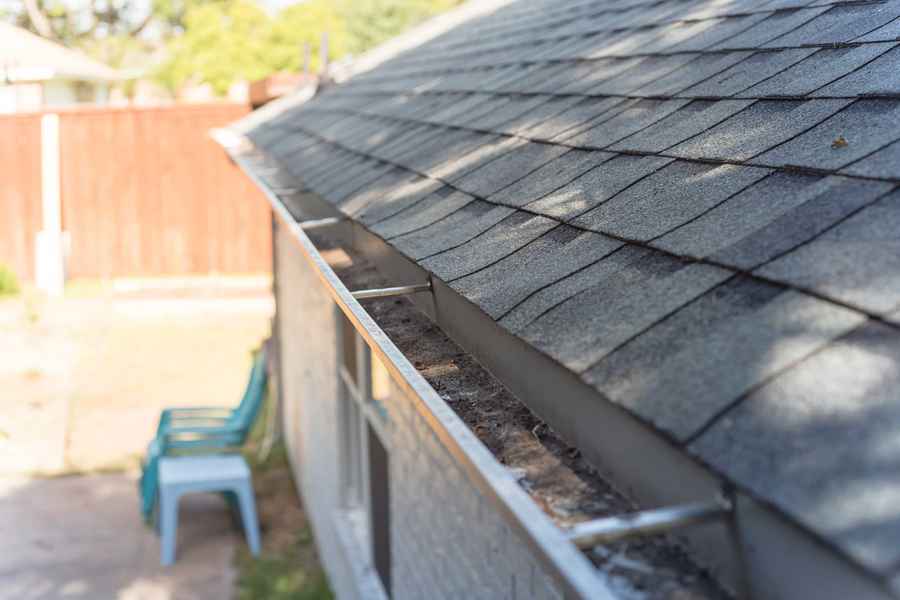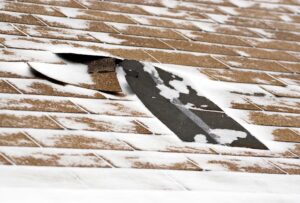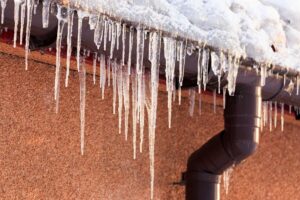Autumn in Michigan is a beautiful time—cooler temperatures, changing leaves, and the excitement of the season ahead. But it also brings unpredictable weather, heavy rains, falling debris, and fluctuating temperatures that can stress even the most durable roofing systems. Whether your roof is brand new or showing signs of age, fall roof preparation is a smart way to get ahead of problems before winter hits.
This guide from Big Rapids Roofing covers essential roofing tips for fall, from inspections and cleaning to attic ventilation and gutter prep. We’ll also walk you through a full Michigan roof maintenance checklist so you can stay protected as the seasons change.
Why Fall Is the Ideal Time for Roof Maintenance in Michigan
Michigan’s fall season provides a valuable window between summer heat and winter storms—perfect for identifying minor issues and fixing them before they become costly repairs. By scheduling routine Michigan roof maintenance in September, October, or early November, you can avoid the challenges of working on a roof during freezing weather, ice buildup, or early snowfalls.
Plus, some roofing materials become brittle in cold weather, making repairs riskier and more time-consuming. Fall temperatures are ideal for sealants, adhesives, and inspections, giving contractors a safer and more effective environment to work in.
Start With a Fall Roof Inspection
The first step in any fall roof preparation plan is a thorough roof inspection. Whether you do this yourself or hire a professional, you want to identify signs of wear, damage, or weakness before winter adds pressure.
What to Look for During a Fall Roof Inspection:
- Missing, cracked, or curling shingles
- Debris buildup in roof valleys or under flashing
- Exposed nails or damaged flashing
- Signs of water staining on ceilings or attic insulation
- Sagging rooflines or soft decking
- Moss, algae, or mold growth
Pay special attention to roof penetrations—like chimneys, skylights, and vents—as these are common leak points. If you spot any concerns, it’s best to have a licensed roofer confirm whether immediate action is needed.
Clear Off Leaves, Branches, and Debris
As Michigan’s trees shed their leaves, your roof, valleys, and gutters quickly become collection points. Allowing debris to accumulate creates moisture traps that can lead to rot, mold, or ice damming later in the season.
Fall Roofing Tip:
Use a soft-bristled broom or leaf blower to remove debris from the roof surface. Never pressure wash your shingles—it can strip granules and damage the underlayment. If your roof is steep or high, consider hiring a roofing contractor with proper equipment.
Don’t Forget the Gutters and Downspouts
Clogged gutters are one of the most common causes of roof and foundation problems in the fall. As leaves pile up, water backs up and spills over, soaking the fascia boards, siding, and even your basement walls.
Michigan Roof Maintenance Checklist for Gutters:
- Clean out all leaves, twigs, and dirt
- Check for sagging or loose sections
- Ensure downspouts are clear and direct water away from the home
- Install gutter guards or screens to reduce debris buildup
If your home is surrounded by trees, it may be necessary to clean gutters multiple times during the fall.

Check Your Attic Ventilation and Insulation
Fall is a great time to go into the attic and check for signs of roof stress from the inside. Poor ventilation can cause condensation, wood rot, and mold buildup—all of which can weaken your roof and reduce its lifespan.
Roofing Tips for Fall Attic Checks:
- Look for signs of moisture or mold on rafters or insulation
- Ensure vents are unblocked and air is flowing properly
- Check for daylight coming through the roof boards (a sign of potential leaks)
A properly ventilated attic helps regulate temperature and moisture during the cold months, reducing the chance of ice dams and boosting energy efficiency.
For more attic safety and insulation advice, visit the U.S. Department of Energy’s Energy Saver guide.
Trim Back Overhanging Branches
Branches that hang over your roof pose multiple risks. In the fall, they drop leaves that clog gutters. In the winter, they can snap under snow load and damage your shingles, vents, or gutters.
Fall Roofing Tip:
Trim branches back at least 8–10 feet from your roofline to minimize the risk of damage and reduce the amount of debris falling onto your roof. For larger trees or limbs near power lines, hire a certified arborist or tree service to do the work safely.
Check Flashing, Seals, and Chimney Caps
Flashing is one of the most common weak points for roof leaks—especially around chimneys, skylights, and plumbing stacks. As sealants age, they become brittle and may crack during freeze-thaw cycles.
Fall Roofing Tips for Flashing and Seals:
- Inspect flashing for rust, gaps, or lifting edges
- Reseal with high-quality roofing caulk where necessary
- Ensure your chimney cap is in place and undamaged
Water entering through flashing can quietly damage your attic insulation or drywall before you even notice. Fall is your last best chance to catch and fix these issues before they turn into indoor problems.
Ice Dam Prevention Starts in the Fall
Ice dams form when snow on your roof melts, then refreezes near the eaves. The water backs up under shingles, causing leaks and even structural damage.
Fall is the best time to get ahead of this issue with:
- Proper attic insulation
- Consistent airflow through soffit and ridge vents
- Heating cables if you’ve had recurring issues in the past
Ice dams are a serious problem for Michigan homes. Taking proactive steps now can prevent major headaches later.
For more information on preventing ice dams, check out this helpful guide from the University of Minnesota Extension.

Schedule Any Necessary Repairs Before Winter
If your fall inspection reveals damage—shingles, flashing, underlayment, or otherwise—schedule your roof repairs as soon as possible. Waiting too long could mean your roof isn’t accessible until spring.
In Michigan, the first snowfall can come as early as October. By acting in early fall, you give your roofing contractor time to complete the work before cold weather slows things down.
Make Fall Roof Prep a Habit, Not a Hassle
Staying on top of fall roof preparation isn’t about being reactive—it’s about protecting your investment, extending the life of your roofing system, and avoiding unexpected repair costs down the road.
At Big Rapids Roofing, we’ve seen how just a few hours of proactive maintenance can save homeowners thousands in emergency repairs. That’s why we encourage every homeowner to schedule an annual inspection and tackle fall maintenance early in the season.
Whether you need a quick repair or a full roof replacement before winter, our team is ready to help.
Prepare Your Roof for Fall—Start With a Free Estimate
Don’t wait for the snow to fall before thinking about your roof. If you’re ready to take care of Michigan roof maintenance and prepare your home for the colder months, let Big Rapids Roofing be your go-to team.
Schedule your inspection and get a free estimate now. We’ll evaluate your roof, recommend smart solutions, and make sure your home is ready to face Michigan’s fall weather head-on.



